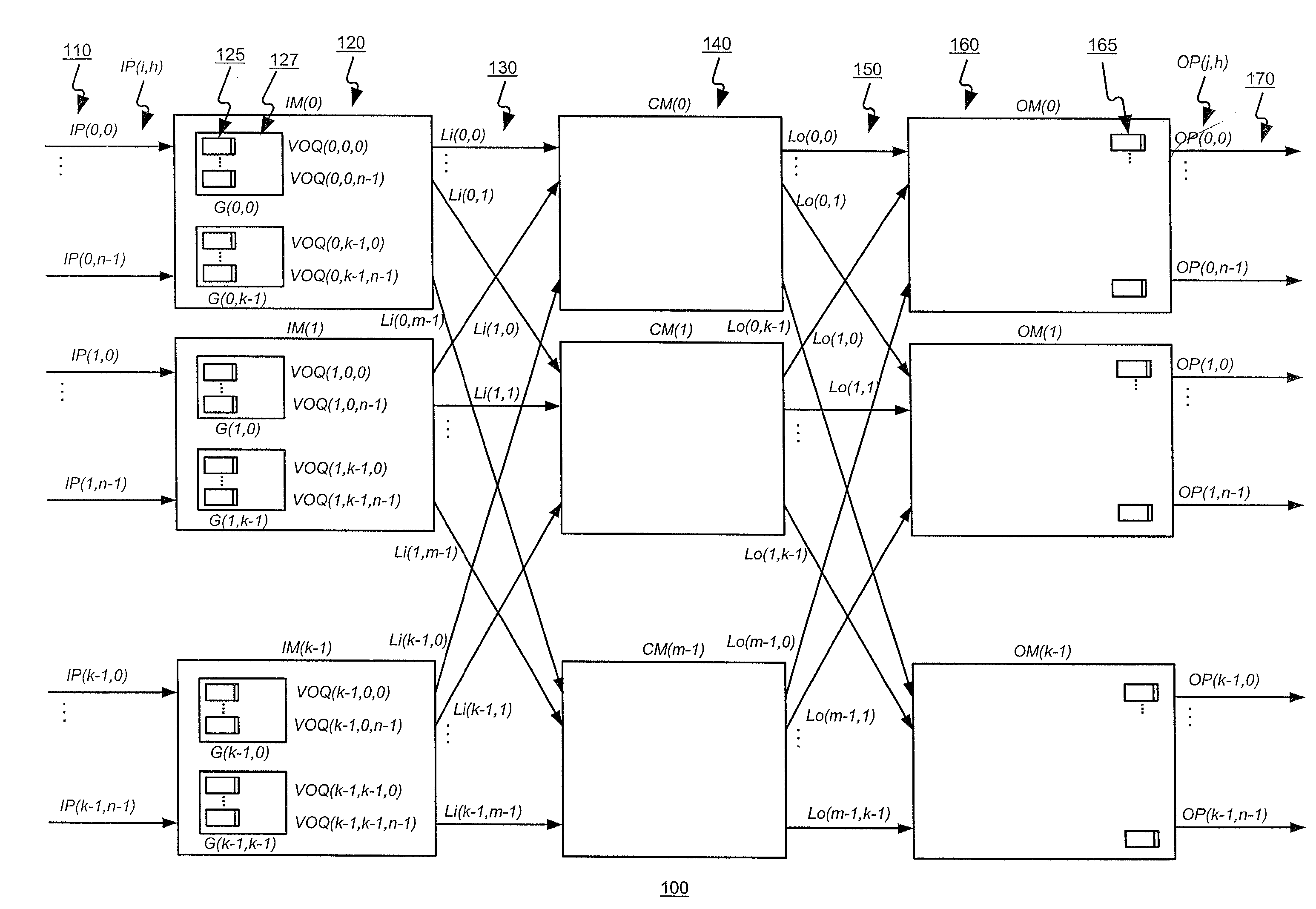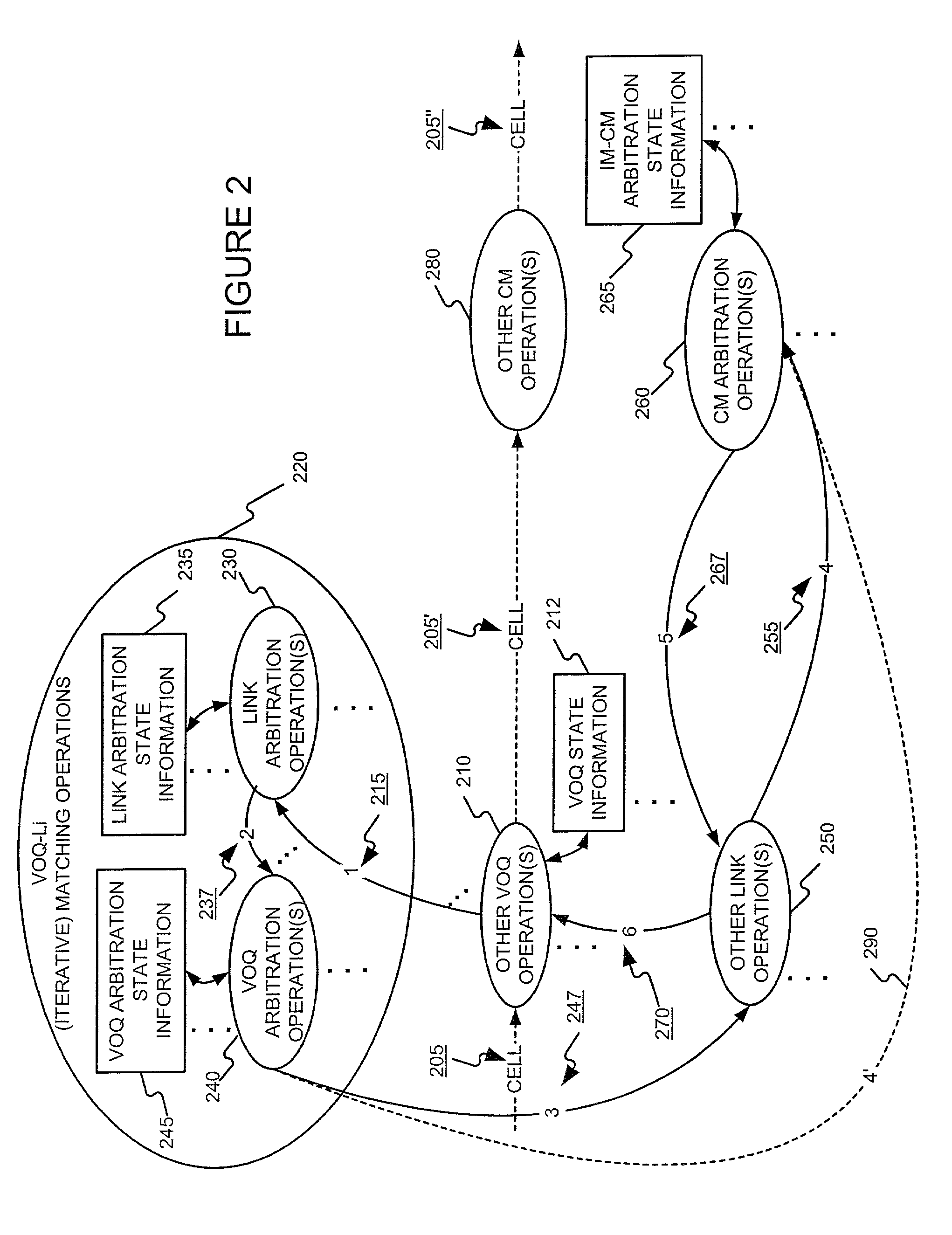Scheduling the dispatch of cells in non-empty virtual output queues of multistage switches using a pipelined hierarchical arbitration scheme
a multi-stage switch and cell technology, applied in data switching networks, store-and-forward switching systems, time-division multiplexing selection, etc., can solve the problems of limiting the feasibility of using such techniques in a large scale, the complexity of the switching element is proportional to the square of the number of switch ports, and the growth of internet traffic. , to achieve the effect of avoiding speeding up the switch fabric, minimizing the dispatch scheduling time, and high throughpu
- Summary
- Abstract
- Description
- Claims
- Application Information
AI Technical Summary
Benefits of technology
Problems solved by technology
Method used
Image
Examples
first embodiment
.sctn. 4.2 FIRST EMBODIMENT
.sctn. 4.2.1 FUNCTIONS THAT MAY BE PERFORMED
[0069] A first aspect of the present invention may function to provide a scalable multiple-stage switch, able to operate at high throughput, without needing to resort to speeding up the switching fabric and without needing to use buffers in the second stage. Accordingly, the present invention may avoid the cost of speed-up and the cell out-of-sequence problems that may occur when buffers are used in the second stage. The present invention may do so using a multiple phase cell dispatch scheme, each phase using a simple and fair (e.g., round robin) arbitration methods. More specifically, the present invention may function to provide a multiple phase cell dispatch scheme in which VOQs of an input module and outgoing links of the input module are matched in a first phase, and in which an outgoing link of an input module is matched with an outgoing link of a central module in a second phase. The arbiters become desync...
PUM
 Login to View More
Login to View More Abstract
Description
Claims
Application Information
 Login to View More
Login to View More - R&D
- Intellectual Property
- Life Sciences
- Materials
- Tech Scout
- Unparalleled Data Quality
- Higher Quality Content
- 60% Fewer Hallucinations
Browse by: Latest US Patents, China's latest patents, Technical Efficacy Thesaurus, Application Domain, Technology Topic, Popular Technical Reports.
© 2025 PatSnap. All rights reserved.Legal|Privacy policy|Modern Slavery Act Transparency Statement|Sitemap|About US| Contact US: help@patsnap.com



